#Joan Nestle
Explore tagged Tumblr posts
Text

Source: The Lesbian Erotic Dance; Butch, Femme, Androgyny and Other Rhythms- by JoAnn Loulan
#joan nestle#Joann loulan#butch femme#butch 4 femme#butch positivity#femme positivity#lgbt#image#lesbian#photo#personal
1K notes
·
View notes
Text
"Femme correspondents connected with me in a different way. Many were grateful for my past work and for the opportunity to announce their identities in their own voices. Their statements reflected one bitter irony: if, in the straight world, butches bear the brunt of the physical and verbal abuse for their difference, in the lesbian-feminist world, femmes have had to endure a deeper attack on their sense of self-worth. Leather and denim, flannels and vests--butch women could easily adapt these prevailing signs of feminist gender resistance into superficial passports to acceptance, but the femme woman, in her lace and silk, high heels, and lipstick, had no place to hide. Many learned to pass as a "dyke" in public while in their homes and in their beds, they flew their flags of color and sensuality. The femme voice is underrepresented in historical records, though markings of her presence abound. Often, she is the security behind the butch display, the one who makes the public bravado possible. Lady Una Troubridge's words to Radclyffe Hall, while spoken by a white, upper-class, Christian woman, capture some of the enduring aspects of femme power: "I told her to write what was in her heart, that so far as any effect upon myself was concerned, I was sick to death of ambiguities ..." Yet to others, the femme woman has been the most ambiguous figure in lesbian history; she is often described as the nonlesbian lesbian, the duped wife of the passing woman, the lesbian who marries. Because I am a femme myself, I know the complexity of our identity; I also know how important it is for all women to hear our voices. If the butch deconstructs gender, the femme constructs gender. She puts together her own special ingredients for what it is to be a "woman," an identity with which she can live and love."
- An excerpt from "Flamboyance and fortitude: An introduction," written by Joan Nestle, the introduction essay for The Persistent Desire: A Butch-Femme Reader. (Emphasis in bold my own.)
#author: joan nestle#the persistent desire: a butch-femme reader#the persistent desire#lesbian literature#lesbian#lesbianism#lesbian books#femme#femme lesbian#femme dyke#butch#butch lesbian#butch dyke#butchfemme#femme4butch#butch4femme#year: 1992#publisher: alyson publications inc.#archived#thatbutcharchivist#dyke#lesbian writing#joan nestle#lesbian history
741 notes
·
View notes
Text
"The essence of butchness is interior, psychological, emotional— a form of psychosexuality as fundamental as heterosexual male, heterosexual female, or femme. Some butches are easily recognizable by outward manner and gesture by even the most naive heterosexual, but most have picked up from the prevailing culture outward behavior that makes 'passing' easy. Only the experienced eye of another lesbian can spot the little telltale gestures. A factor of consequence in this matter of behavior is the butch's own attitude toward herself. If early on she has fully accepted herself, she ceases to be concerned with every little gesture that might give her away. She presents a naturalness that offends no one despite her being thought of as a masculine woman. In contrast, the butch who fears herself, who is overly sensitive to the ridicule generally heaped upon the masculine woman, may suffer the torments of hell. Day in and day out she tries to disguise her inner masculinity; she may even manage to hide it from herself. To others she appears strange and unnatural. Though she has thoroughly accepted her lesbianism, she knows not what to do with this tender masculinity hidden within her. In some instances this leads to her taking the role of the femme. This is a curious inversion of her true self, one that points out the reciprocity or mirror-image aspect of butch-femme. For the qualities of butch and femme are not opaque to each other— the butch senses the nature of the femme by what it is she seeks in another, and vice versa. An analogy might be the right and left hands. These two hands, though the same in most ways, are also the exact reversals of each other."
- Rita Laporte, "The butch-femme question," from The Ladder (1971) [reprinted in The Persistent Desire: A Femme-Butch Reader (1992)]
#mdni blog#text#mine#lesbian#lesbiansafe#butch lesbian#femme lesbian#butchfemme#butch/femme#butch#femme#butch femme#butch femme history#butch history#femme history#bf history#butch4femme#femme4butch#butch femme literature#quotes#the persistent desire: a femme-butch reader#joan nestle#rita laporte#lesbian history#lesbian herstory#dykeposting
300 notes
·
View notes
Text
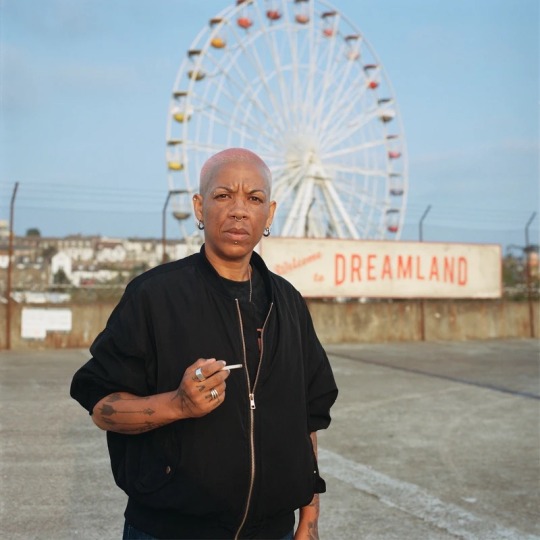
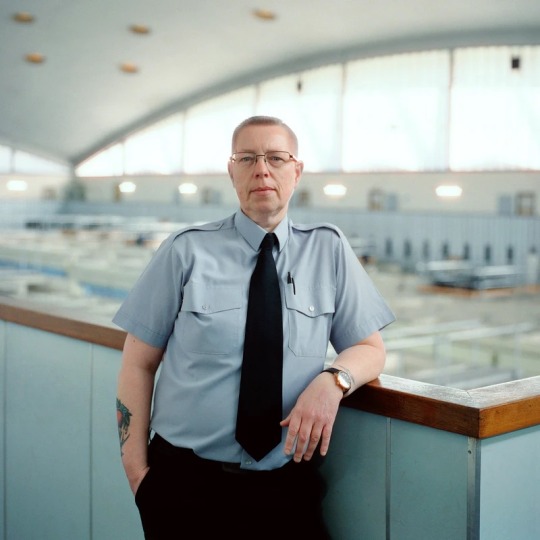

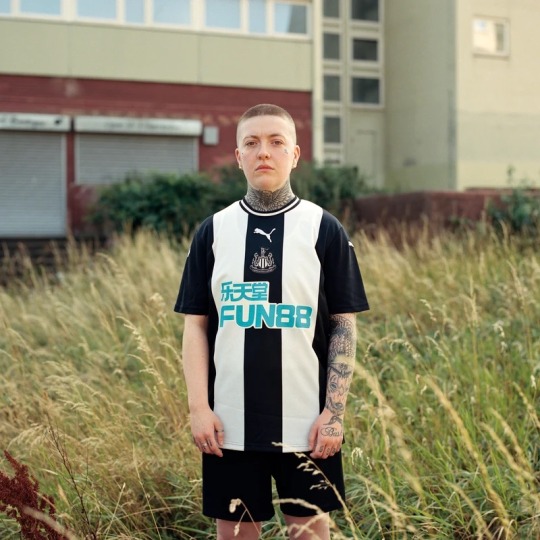
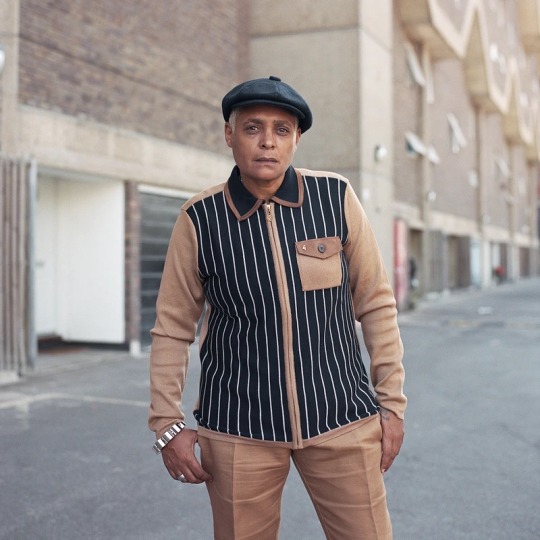

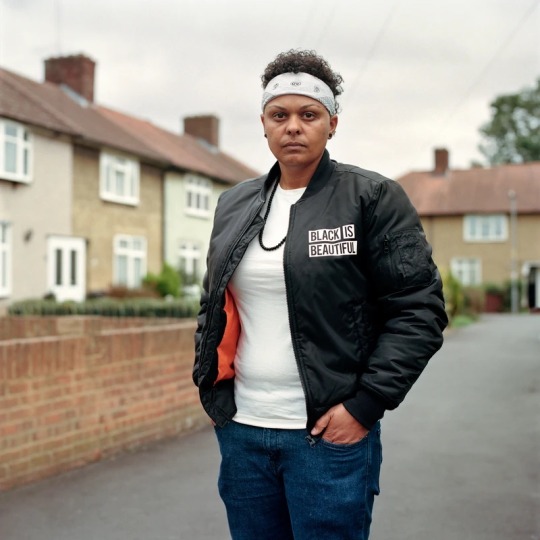
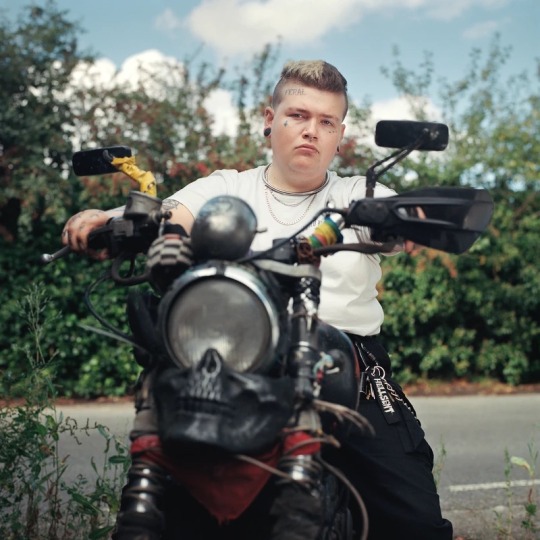
Roman Manfredi We/Us
Butches and Studs from working class backgrounds within the British landscape
Co-curated by Ingrid Pollard
Exhibition: 9 March – 3 June 2023 at Space station 65, Kennington, London
Opening hours: 12 – 6PM, Wednesday – Saturdays
Free to visit. Accessible. All welcome.
We/Us is an intergenerational photography and oral history project that celebrates the presence of butches and studs from working-class backgrounds within the British landscape. The project explores the experience of female masculinity through the structures of class and race all over the UK, capturing our diversity as well as our commonality.
When searching for images of butches and studs online, most that come up are from a bygone era, or from the US. Conversations around gender and identity today are often academic and London-centric, sometimes forgetting that our identities are informed by our every day lived experiences.
Our history and our lived experience is our gift to the world.
– Joan Nestle, Restricted Country
Exhibition audio - Participants were interviews about their lives and experiences,
Instagram
Vice uk feature
#posting this incredible exhibition with all the relevant information#dyke#butch#stud#masc#butch lesbian#stud lesbian#butch femme#Joan nestle#Ingrid pollard#Roman Manfredi#uk butch#lesbian#stud femme#butch4butch#butch dyke#masc lesbian#female masculinity#butch positivity#lesbian positivity
4K notes
·
View notes
Text
Stormé DeLarverie singing "There Will Never Be Another You" in Michelle Parkerson's "Stormé: The Lady of the Jewel Box" (1987)
full doc available now on the internet archive!
#Stormé DeLarverie#Stormé#lesbian#drag king#pre-stonewall#joan nestle#drag#jewel box revue#mine#michelle parkerson#butch#masc
796 notes
·
View notes
Text
The femme voice is underrepresented in historical records, though markings of her presence abound. Often, she is the security behind the butch display, the one who makes the public bravado possible. Lady Una Troubridge's words to Radclyffe Hall, while spoken by a white, upperclass, Christian woman, capture some of the enduring aspects of femme power: "I told her to write what was in her heart, that so far as any effect upon myself was concerned, I was sick to death of ambiguities..." Yet to others, the femme woman has been the most ambiguous figure in lesbian history; she is often described as the nonlesbian lesbian, the duped wife of the passing woman, the lesbian who marries. Because I am a femme myself, I know the complexity of our identity; I also know how important it is for all women to hear our voices. If the butch deconstructs gender, the femme constructs gender. She puts together her own special ingredients for what it is to be a "woman/' an identity with which she can live and love.
— Joan Nestle, Flamboyance and Fortitude: An Introduction from The Persistent Desire: A Femme-Butch Reader (edited by Joan Nestle)
#lee postz#words#writing#lesbian#lgbt#lgbtq#the persistent desire#quote#quotes#lesbianism#lesbiansafe#lesbian history#Joan nestle#femme#femme lesbian#butchfemme#femmebutch#femme4butch#butch4femme#wlw
339 notes
·
View notes
Text

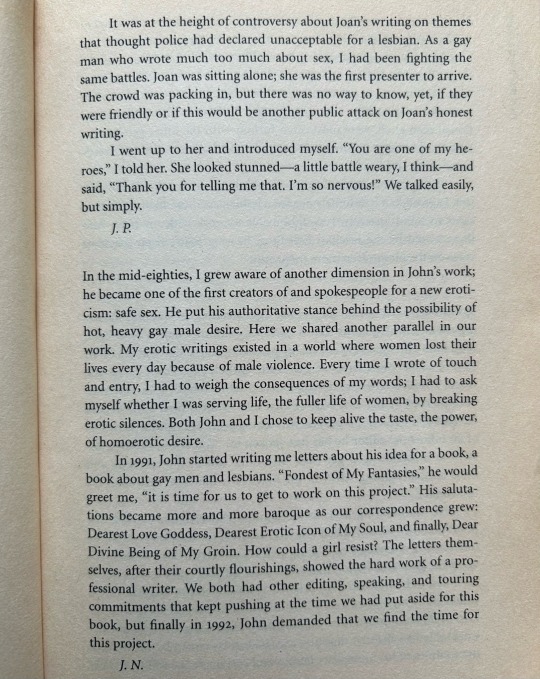


joan nestle and john Preston, from Sister & Brother: Lesbians and Gay Men Write About Their Lives Together, 1994
216 notes
·
View notes
Text

Mabel Hampton and her dog Liberation pouring over documents on the floor of the original Lesbian Herstory Archives located in Manhattan in 1977 | ph: Joan Nestle
#op#photography#mabel hampton#joan nestle#lesbian herstory archives#nyc#1970s#1977#lesbian#l#lgbt#dogs#animals
1K notes
·
View notes
Text


Madeline Davis (with Joan Nestle) on the combination of masculinity & femininity in the men she’s been with
excerpt 1:
[…] but I had partners that supported that image. Some of my partners were very feminine men. They were Sal Mineo when he was a pretty, big-eyed, soft-looking baby-butch type. So I was satisfied for a long time with them and wondered why my girlfriends were into muscle and macho, because I wanted men who were sweet. Even when I was coming out, I went back and forth some. I went with a couple of guys who were faggots and were quite effeminate.
J: The first adult person I loved and lusted after was a gay man.
M: I loved that combination of toughness and softness, that combination of masculinity and femininity. And then I began looking for it in women too […]
excerpt 2:
M: My first sexual experience with a woman was different from the way I expected it to be. I had already been fucking a lot of men, even loving a few of them. They were in a strange way—when you said you liked tough, hard men — the men I loved. Although they were pretty and sweet, they were outlaws, they were poets, they smoked dope, they sold [dope] […]
from “The Femme Tapes” by Joan Nestle, Madeline Davis, and Amber Hollibaugh (recorded 1982), published in The Persistent Desire: A Femme-Butch Reader (1992), ed. Joan Nestle
#madeline davis#joan nestle#femme#fem#femme4femme#dyke4fag#fag4dyke#femme4butch#queer history#the femme tapes#the persistent desire#mac’s bookshelf#💖💖💖#image described#drugs
41 notes
·
View notes
Text
“We are the vessels of our histories.”
“We are taught that we are an absence and mistake this for a longing to be found.”
“How did I wind up here? Forgotten worlds inside me?”
“And one thing more: that for gay people, history is a place where the body carries its own story. (…) These times leave their mark both on the body and the imagination, but it is the body that has been most often cheated out of its own historical language, the body that so often appears as the ahistorical force that we simply carry with us until, for those of us born healthy, it tumbles us to the earth of restricted movement. But my body made my history—all my histories.”
the queer body as living archive
A dear friend / Why We Have a Body, Claire Chaffee / Lempicka, Carson Kreitzer/ A Restricted Country, Joan Nestle
#queer history#queer experience#queer community#queer theory#lempicka#tamara de lempicka#lempicka musical#Carson kreitzer#a restricted country#Joan nestle#why we have a body#Claire Chaffee#lgbt history#lesbian history#Gay history#does this count as#web weaving
19 notes
·
View notes
Text

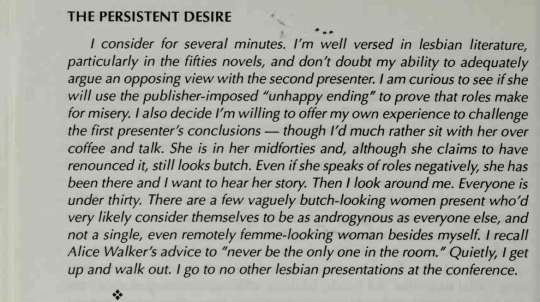
"The main justification for invalidating butch-femme is that its an imitation of heterosexual roles and, therefore, not a genuine lesbian model. One is tempted to react by saying "So what?" but the charge encompasses more than betrayal of an assumed fixed and "true" lesbian culture. Implicit in the accusation is the denial of cultural agency to lesbians, of the ability to shape and reshape symbols into new meanings of identification. Plagiarism, as the adage goes, is basic to all culture.
In the real of cultural identity, that some of the markers of a minority culture's boundaries originate in an oppressing culture is neither unusual nor particularly significant. For instance, in the United States certain kind of bead- and ribbon work are immediately recogniziable as specific to Native American cultures, wherein they serve artistic and ceremonial functions. Yet beads, trinkets, ribbons, and even certain "indian" blanket patterns were brought by Europeans, who traded them as cheap goods for land. No one argues that Indians out to give up beadwork or blanket weaving, thus ridding themselves of the oppressors symbols, because those things took on a radically different cultural meaning in the hands of Native Americans. Or consider Yiddish, one of the jewish languages. Although Yiddish is written in Hebrew characters and has its own idioms and nuances, its vocabulary is predominantly German. Those who speak German can understand Yiddish. Genocidal Germanic anti-Semitism dates back to at least the eleventh century. Yet East European Jews spoke "the oppressors language," developing in it a distinctive literary and theatrical tradition. Why is it so inconceivable that lesbians could take elements of heterosexual sex roles and remake them?
*
It is June 1987, and I am sitting in a workshop on "Lesbians and Gender Roles" at the annual National Women's Studies Conference. It is one of surprisingly few workshops on lesbian issues, particularly since, at a plenary session two mornings later, two thirds of the conference attendees will stand up as lesbians. Meanwhile, in this workshop the first speaker is spending half an hour on what she calls "Feminism 101," a description of heterosexual sex roles. Her point in doing this, she says, is to remind us of the origin of roles, "which are called butch and femme when lesbians engage in them." She tells us the purpose of her talk will be to prove, from her own experience, that "these roles are not fulfilling" for lesbians. She tells us that the second speaker will use lesbian novels from the 1950s to demonstrate the same thesis. And, indeed, the second speaker has a small stack of 1950s "pulp paperbacks" with her, many of them the titles that, when I discovered them in the mind-1970s, resonated for me in a way that the feminist books published by Daughters and Diana Press did not.
I consider for several minutes. I'm well versed in lesbian literature, particularly in the fifties novels, and don't doubt my ability to adequately argue an opposing view with the second presenter. I am curious to see if she will use the publisher-imposed "unhappy ending" to prove that roles make for misery. I also decide I'm willing to offer my own experience to challenge the first presenters conclusions- though I'd much rather sit with her over coffee and talk. She is in her midforties and, although she claims to have renounced it, still looks butch. Even if she speaks of roles negatively, she has been there and I want to hear her story. Then I look around me. Everyone is under thirty. There are a few vaguely butch-looking women present who'd very likely consider themselves to be as androgynous as everyone else, and not a single, even remotely femme-looking women besides myself. I recall Alice Walker's advice to "never be the only one in the room." Quietly, I get up and walk out. I go to no other lesbian presentations at the conference."
“Recollecting History, Renaming Lives: Femme Stigma and the feminist seventies and eighties" by Lyndall MacCowan, The Persistent Desire, (edited by Joan Nestle) (1992)
#the persistent desire#Lyndall MacCowan#Joan nestle#lesbian#lesbianism#butch and femme#butchfemme#butch and femme history#butch lesbian#femme lesbian#butch history#femme history#lesbian history#lesbian culture#lesbian feminism#lesbian feminist history#lgbt history#queer history
119 notes
·
View notes
Text
Excerpt:
Edel said the archives were founded because she and members of a group called the Gay Academic Union, which worked to make academia more accepting of LGBTQ people in the ‘70s, began talking about how difficult it was to find reliable information about lesbian history.
“A few of us said, ‘Hey, why don’t we just start collecting our history? We’re the ones who best know what we need, what we want. Why let other people do that for us, because they’ll control our history?’” recalled Edel, who now splits her time between New Jersey and Arizona with her partner. “We were all people who really knew that our history was disappearing too quickly.”
[...]
The Lesbian Herstory Archives hosts a variety of events, such as a weekly “Lez Craft!” night on Thursdays. For its 50th anniversary, the organization is hosting a “Dyke Prom” in May at a loft in Brooklyn, though Edel noted that the event is already sold out.
When asked about goals for the next 50 years, she said the archives have outgrown the Brooklyn space and will need to move soon.
“Fifty years is too hard to say,” Edel said. “We leave that in the hands of the next generation. I certainly won’t be around, and I’m just hoping that it still will be mission-driven so that we reflect the amazing complexity of our communities.” /endquote
Photos from article:


#Lesbian Herstory Archives#herstory#history#lesbian#sapphic#dyke history#vacation ideas#queer#queer community#lesbian community#sapphic community#queer women#Deborah Edel#Brooklyn#New York#NYC#Joan Nestle#lesbian culture#sapphic culture#LGBTQ#queer studies#nonprofit#archives#lgbtqai community
20 notes
·
View notes
Text
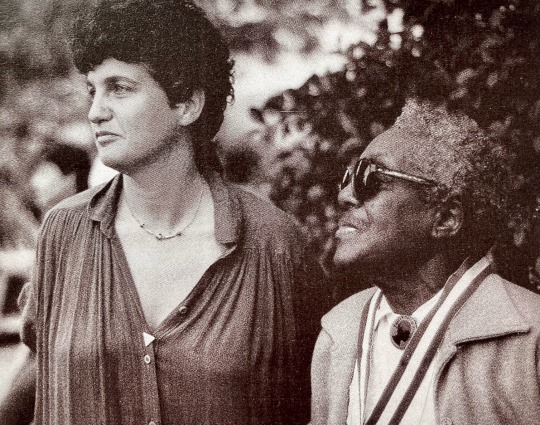
"Joan Nestle and Mabel Hampton" by Morgan Gwenwald
source: The Wild Good: Lesbian Photographs & Writings on Love, edited by Beatrix Gates
#lesbian literature#lesbian#dyke#archived#thatbutcharchivist#butch#butch dyke#butch lesbian#femme#femme lesbian#femme dyke#joan nestle#mabel hampton#black lesbian#black butch#the wild good#author: beatrix gates#photographer: morgan gwenwald#year: 1996#publisher: doubleday dell publishing group inc.#publisher: anchor books#lesbian history#black lesbian history#lesbian books#lesbian photography#lesbian elder
203 notes
·
View notes
Text

"The femme question" by Joan Nestle, in The Persistent Desire: A Femme-Butch Reader
Text ID: Thus femmes became the victims of a double dismissal: in the past they did not appear culturally different enough from heterosexual women to be seen as breaking gender taboos, and today they do not appear feminist enough, even in their historical context, to merit attention or respect for being ground-breaking women. End ID
12 notes
·
View notes
Text
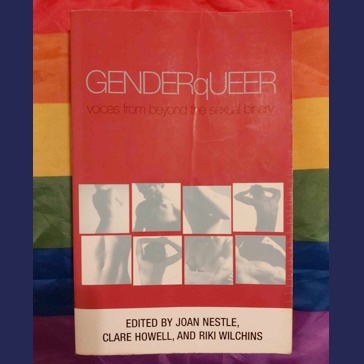
Y llyfr heddiw yw 'GENDERqUEER' a olygwyd gan Joan Nestle, Clare Howell a Riki Wilchins, a gyhoeddwyd yn 2002.
Mae'r llyfr hwn yn casgliad o draethodau rhyweddgwiar. Defnyddiwyd rhyweddgwiar yn y 1990au a'r 2000au i olygu unrhyw un yn croesi normau rhywedd - cydryweddol neu drawsryweddol, bwtsh neu ffem, wrywaidd neu fenywaidd, deuaidd neu anneuaidd - y ddau ac y naill na'r llall. Yn ddiweddar, mae'r term wedi dod yn olygu dim ond anneuaidd, ond mae'r term mewn gwirionedd yn ymbarél mawr. Mae'r traethodau'n ddisgrifio trawsnewid menyw i ddyn, rhyw lesbiaidd, menywod bwtsh, rhyw hoyw cyntaf, dysfforia rhywedd ac yn y blaen.
Dyma'r llyfr yn bwysig iawn imi - rwy'n ddyn traws ac yn rhyweddgwiar fy hun!
Ydych chi wedi darllen y llyfr hwn?
/
Today's book is 'GENDERqUEER' edited by Joan Nestle, Clare Howell and Riki Wilchins, published in 2002.
This book is a collection of genderqueer essays. Genderqueer was used in the 1990s and 2000s to mean anyone crossing gender norms - cisgender or transgender, butch or femme, male or female, binary or nonbinary - both, or neither. Lately, the term has come to mean just nonbinary, but the term is actually a huge umbrella. The essays describe female-to-male transition, lesbian sex, butch women, first gay sex, gender dysphoria and so on
. This book is very important to me - I'm a trans man and genderqueer myself!
Have you read this book?
#cymraeg#welsh#lhdt#trawsryweddol#cymblr#rhyweddgwiar#GENDERqUEER#Riki Wilchins#Joan Nestle#Clare Howell#trans essays#genderqueer pride#anneuaidd#bwtsh#ffem#abinary#nonbinary#transgender#Llyfrau Mawrth
16 notes
·
View notes
Text

— Joan Nestle, Flamboyance and Fortitude: An Introduction from The Persistent Desire: A Femme-Butch Reader (edited by Joan Nestle)
#lee postz#Words#writing#lesbian#lgbt#lgbtq#the persistent desire#quote#quotes#lesbianism#lesbian safe#Joan nestle#lesbian history#femme#femme lesbian#butchfemme#femmebutch#butch4femme#femme4butch#wlw#id in alt text
28 notes
·
View notes